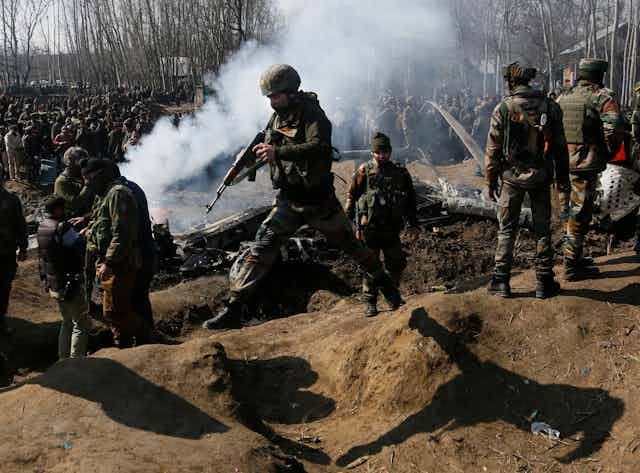India has carried out a wave of missile and air strikes across Pakistan and Pakistan-administered Kashmir in a large-scale military operation named Operation Sindoor, intensifying already strained relations between the two nuclear-armed nations.
The strikes, which took place in the early hours of May 6, targeted nine locations allegedly linked to terrorist activity.
Indian defence officials described the operation as a strategic response to the April 22 bombing in Pahalgam, Indian-administered Kashmir, which left 26 Hindu pilgrims dead.
The attack was reportedly carried out by the Resistance Front, a group India says is connected to the banned Lashkar-e-Taiba network.
“These were precise missions aimed at eliminating terrorist infrastructure. India will not allow terrorism to flourish across its borders,” a senior Indian military official stated during a press briefing in New Delhi.
Pakistan has strongly rejected India’s justification, branding the air raids an “unwarranted act of war.”
Officials in Islamabad claimed the strikes resulted in civilian deaths, including women and children, and damaged religious and residential structures.
Pakistan also asserted that several Indian jets were shot down, though India has not verified those claims.
In retaliation, Pakistani forces shelled Indian military positions along the Line of Control (LoC), with both sides reporting casualties.
At least six civilians were killed in Indian-administered Kashmir amid the cross-border exchange.
Pakistan’s Prime Minister convened an urgent meeting of the National Security Committee and issued a stern warning that further aggression would provoke a full-scale response.
Meanwhile, India has elevated its military readiness along its western frontier.
The global community, including the United Nations, the United States, and the European Union, has called for calm, urging both nations to avoid actions that could trigger further conflict.
This latest flare-up has reignited fears of another prolonged standoff, reminiscent of the 2019 post-Pulwama crisis.
Observers warn that the current conflict could be even more dangerous, given the civilian toll and the growing accusations of state-backed terrorism from both sides.
With South Asia once again on edge, the spotlight returns to the precarious peace between two nations with a history of hostility and the nuclear weapons to match.


